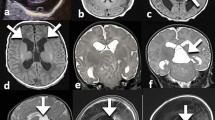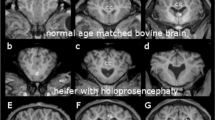Abstract
Adipsic hypernatraemia is an uncommon disorder in childhood caused by a defect in the osmoregulation of thirst, leading to impairment of water homeostasis and chronic hyperosmolality of body fluids. Adipsia is often associated with an abnormality in osmoregulated vasopressin secretion due to the close proximity of the hypothalamic osmoreceptors that control thirst with those regulating vasopressin secretion. Hypothalamic lesions of diverse aetiology (vascular abnormalities, neoplasms, granulomatous diseases, trauma etc.) have been described in this syndrome. We report a 12-year-old boy with evident weight loss due to hypernatraemic dehydration with a selective defect in osmoregulation of thirst and normal vasopressin secretion with no demonstrable structural lesion. To date, only six paediatric patients with this condition have been described in the literature. Conclusion:hypothalamic adipsic hypernatraemia syndrome must be suspected when a dehydrated patient denies thirst. The study of antidiuretic function is necessary because the osmoregulation of vasopressin secretion could be altered.

Similar content being viewed by others
Abbreviations
- ADH :
-
antidiuretic hormone
- AVP :
-
arginine vasopressin
- Posm :
-
plasma osmolality
References
Assadi FK, Johnston B, Dawson M, Sung B (1989) Recurrent hypertonic dehydration due to selective defect in the osmoregulation of thirst. Pediatr Nephrol 3: 438–442
Ball SG, Vaidja B, Baylis PH (1997) Hypothalamic adipsic syndrome: diagnosis and management. Clin Endocrinol 47: 405–409
Blank MS, Farnsworth PB (1974) Idiopathic symptomatic hypernatremia in a 9-year-old boy: a clinical and physiological evaluation. J Pediatr 85: 215
Conley SB, Brocklebank JT, Taylor IT, Robson AM (1976) Recurrent hypernatremia; a proposed mechanism in a patient with absence of thirst and abnormal excretion of water. J Pediatr 89: 898–903
Farley PC, Lau KY, Suba S (1986) Severe hypernatremia in a patient with psychiatric illness. Arch Intern Med146: 1214–1215
Green RP, Landt M (2002) Home sodium monitoring in patients with diabetes insipidus. J Pediatr 141: 618–624
Halter JB, Goldberg AP, Robertson GL, Porte D (1977) Selective osmoreceptor dysfunction in the syndrome of chronic hypernatremia. J Clin Endocrinol Metab 44: 609–616
Hammond DN, Moll GW, Robertson GL, Chelmicka-Schorr E (1986) Hypodipsic hypernatremia with normal osmoregulation of vasopressin. N Engl J Med 315: 433–436
Hayek A, Peake GT (1982) Hypothalamic adipsia without demonstrable structural lesion. Pediatrics 70: 275–278
Hickey RC, Hare K (1944) The renal excretion of chloride and water in diabetes insipidus. J Clin Invest 23: 768
Kovacs L, Robertson GL (1992) Disorders of water balance-hyponatremia and hypernatremia. Baillières Clin Endocrinol Metab 6: 107–127
Nguyen BN, Yablon SA, Chen CY (2001) Hypodipsic hypernatremia and diabetes insipidus following anterior communicating artery aneurysm clipping: diagnostic and therapeutic challenges in the amnestic rehabilitation patient. Brain Injury 15: 975–980
Papadimitriou A, Kipourou K, Manta C, Tapaki G, Philippidis P (1997) Adipsic hypernatremia syndrome in infancy. J Pediatr Endocrinol Metab 10: 547–550
Pearce SH, Argent NB, Baylis PH (1991) Chronic hypernatremia due to impaired osmoregulated thirst and vasopressin secretion. Acta Endocrinol 125: 234–239
Perez O, Oster JR, Robertson GL (1989) Severe hypernatremia with impaired thirst. Am J Nephrol 9: 421–434
Phillips MG, Gabow PA (1990) Psychogenic adipsia in a patient with psychotic depression. Am J Kidney Dis 15: 592–594
Radetti G, Rizza F, Mengarda G, Pittschieler K (1991) Adipsic hypernatremia in two sisters. Am J Dis Child 145: 321–325
Romero C, Díaz A, Olivan B, Calle A, Puente M, Charro AL, Espinos D (1985) Hipernatremia adípsica: a propósito de un caso. Rev Clin Esp 177: 187–190
Schaad V, Vasella F, Zuppinger K, Oetliker O (1979) Hypodipsia-hypernatremia syndrome. Helv Paediatr Acta 34: 63–76
Schaff-Blass E, Robertson GL, Rosenfield RL (1983) Chronic hypernatremia from a congenital defect in osmoregulation of thirst and vasopressin. J Pediatr 102: 703–708
Author information
Authors and Affiliations
Corresponding author
Rights and permissions
About this article
Cite this article
López-Capapé, M., Golmayo, L., Lorenzo, G. et al. Hypothalamic adipic hypernatraemia syndrome with normal osmoregulation of vasopressin. Eur J Pediatr 163, 580–583 (2004). https://doi.org/10.1007/s00431-004-1495-9
Received:
Accepted:
Published:
Issue Date:
DOI: https://doi.org/10.1007/s00431-004-1495-9




